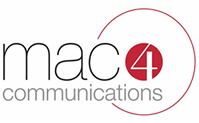
How many websites have you …
- clicked into, only to immediately click out again?
- wandered through aimlessly until you finally left in disgust?
- found interesting, but not compelling?
You don’t want any of the above scenarios to describe a visitor’s experience with yourwebsite! So here is one of the primary keys to avoiding the “tangled web” syndrome:
Set a goal for each page and write to achieve that goal.
Notice that I didn’t say, “Set a goal for the website.” You should do that as well, but that is probably a broad goal such as “make sales,” “establish credibility,” or “generate leads.” It is theindividual pages and these smaller, specific goals that make the overarching objective a reality.
Let’s take three examples common to every website:
First, the Home page. A primary goal of the Home page of your website is to answer the question “Am I in the right place?” It is not to spill all the myriad details about your company, forcing people to scroll on and on and on. Give people enough so that in the second or two their eyes sweep your home page, they say, “Ah-ha! This is what I am looking for!”
If someone is in the right place, then your Home page has a secondary goal: to answer the question, “Where do I go from here?” Don’t leave people hanging! Imagine yourself walking into a building for a conference. You know you’re at the right location because of the huge banner hanging above the main entrance. But once in the lobby, where do you go for the seminar you signed up for? There are four hallways – which one do you go down? Your Home page needs to provide clear direction for all the different visitors who come your way.
Next, let’s look at the About page. Let me tell you what doesn’t work: giving a history of your company from the dawn of time. You will yawn people to death. Instead, use your About page to answer the question “Why should I choose you?” This changes the focus of the About page from facts to benefits. Might you still want to point out that you have been in business for 20 years? Sure – but do so by stressing your longevity or your reputation or your expertise. These are benefits that excite people’s interest. The facts back up the benefits.
Finally, turn to the Contact page. So often, I simply see the company contact info. Period. But the goal of the Contact page is to prompt action. A phone number and web form doesn’t cut it! Re-cap for people why they should contact you: it might be the final push necessary for them to pick up the phone or send an email. Would you want to lose a sale just because someone lost their momentum at this absolutely crucial juncture?
Take Action!
Take a look at your website. Can you identify the goal for each page? Or, to position it another way, what does each page accomplish? If you can’t readily and clearly answer those questions, it’s time to re-think the copy!
Author: Paula Marolewski

